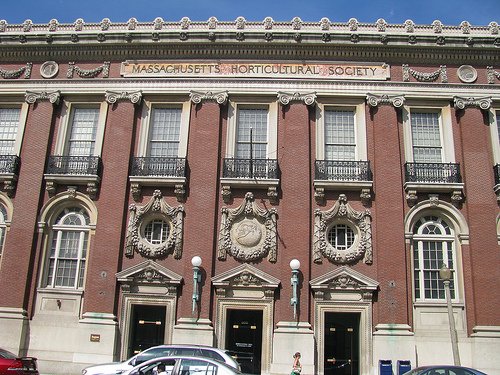Boston – Responding to a catastrophic deluge at the downtown Boston headquarters of the Mass. Horticultural Society that soaked thousands of administrative files and the contents of a huge vault filled with rare books, illustrated horticultural manuscripts and historically significant documents, Puritan Flood Restoration of Needham implemented a contingency restorative drying program that saved millions of dollars for the venerable institution.
Cold winter weather and an improperly insulated humidification system, precipitated the incident which originated in the society’s archival vault. Within one minute of bursting, it is estimated over $ 1 million dollars of rare books were damaged. Puritan responded by first removing all standing water, utilizing high volume reciprocating pumps while taking action to protect documents untouched by the water against secondary damage due to elevated humidity levels.
In consultation with society personnel and rare book conservators, volumes were patted down with absorbent paper and removed directly to truck-mounted commercial freezing units procured on a contingency basis. Puritan elected to take this action because freezing slows, then stops entirely reliquefaction and running of ink. Also, mold and mildew are arrested immediately, preserving leather bindings and fragile pages. In a similar fashion, the glue used in bindings is preserved.
Within 90 minutes of the break, books were being frozen, boxed, and inventoried prior to removal to an ice company warehouse to await complete restoration under controlled conditions. At the same time, Puritan undertook carefully monitored and controlled drying program to protect the voluminous quantities of printed materials that remained in-place on the shelves of a library facility surrounding the vault where the original rupture
occurred.
The building structure required immediate drying if the wholesale loss was to be avoided, yet the institution’s staff asked that certain criteria be observed in order to preserve valuable texts. Glues used in the fabrication of old books maintain their integrity within a relatively narrow humidity range. Too much softens them inordinately, too little leads to cracking and powdering.
Careful testing showed the vault area of the library to have a relative humidity of 80% in the period immediately following the flood, well above ideal levels. Structural humidity levels within the building walls and floors had to be brought to significantly lower levels in a short amount of time while subjecting printed materials to a more gradual re-adjustment. Puritan responded by precision testing humidity levels in both structural elements and printed materials with special radio frequency measurement devices. The use of high-volume air movers and desiccant dehumidification systems promoted controlled drying of both Horticultural Hall and its contents.
Puritan Flood Restoration is New England’s leading restorative drying organization. The company maintains trained crews of restorative drying specialists in a state of alert and ready for immediate response. Puritan inventories the largest complement of real property drying equipment in the region, including the specialized high-volume air movers and desiccant dryers necessary for post-flood, controlled drying.
Puritan’s combination of manpower, equipment, and know-how saves its clients millions of dollars in restoration costs. Client organizations of the firm include the total spectrum of real estate interests, insurance organizations, and private property owners.
Puritan Flood Restoration Rescues Library Collection
New England Real Estate Journal
Owners, Developers & Managers
Building Services


